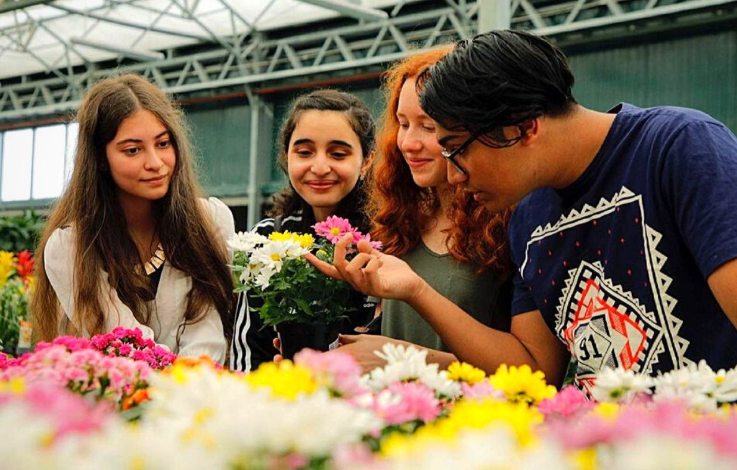The Science Behind Flowers and Happiness

There’s something undeniably uplifting about walking into a room filled with fresh flowers. Their colours, shapes, and fragrances can instantly change the mood of a space—and, more importantly, the mood of the people in it. But what if this joy isn’t just psychological or aesthetic? Research has shown that flowers can have measurable effects on our emotional and mental well-being. The connection between flowers and happiness is deeply rooted in both science and human nature.
The Psychology of Colour and Scent
One of the most powerful ways flowers influence emotions is through colour. Bright hues like yellow, pink, and orange are often associated with positivity and energy, while softer tones like lavender or pastel blue evoke calmness and peace. This colour psychology explains why floral arrangements are used in places like hospitals, offices, and homes—to enhance the overall emotional environment.
The scent of flowers also plays a crucial role. Studies in aromatherapy reveal that certain floral fragrances—such as lavender, jasmine, and rose—can reduce anxiety and lower cortisol levels. Feel-good chemicals, like serotonin and dopamine, are released in the brain when these natural scents are breathed in. This makes you feel truly calm and happy. This is why even a single vase of fresh blooms can transform a dull afternoon into something more serene and pleasant.
Evolutionary Roots of Floral Attraction
Our fascination with flowers isn’t a modern phenomenon—it’s evolutionary. For thousands of years, humans have associated flowers with life, fertility, and abundance. Early humans may have been drawn to blossoms because they indicated a healthy environment where fruit and resources were nearby. This association between blooms and vitality remains deeply embedded in our subconscious today.
Modern evolutionary psychologists suggest that flowers act as subtle mood enhancers, reminding our brains of growth, renewal, and connection to nature. When someone receives flowers, their brain processes this as a sign of care and affection, strengthening emotional bonds and improving social well-being.
Flowers as Emotional Catalysts
Beyond their sensory appeal, flowers serve as powerful emotional triggers. A bouquet can communicate love, sympathy, gratitude, or celebration without a single word. The act of giving and receiving flowers sparks positive emotions in both parties, reinforcing social connections and empathy.
From their research, Rutgers University found that people who got flowers were happier and more satisfied than those who received other types of gifts. Interestingly, the study also revealed that the positive mood effects of flowers lasted for several days—demonstrating their lasting psychological influence.
See also: TV Advertising Cost: What You Should Expect to Pay
The Role of the Artisan Florist
Behind every stunning arrangement that brings joy to someone’s day is often an artisan florist—a creative professional who understands the emotional language of flowers. Unlike mass-produced bouquets, arrangements made by an artisan florist are thoughtfully curated to balance colours, textures, and fragrances in ways that evoke specific emotions.
An artisan florist doesn’t just design with aesthetics in mind; they craft with intention. Whether it’s a calming pastel bouquet for someone recovering from illness or a vibrant arrangement to celebrate an engagement, the florist’s understanding of human psychology helps transform simple blooms into emotional art. Their work merges science with creativity—bringing together biology, colour theory, and design to spark happiness in others.
Flowers in Daily Life
You don’t need a special occasion to enjoy the benefits of flowers. Keeping a few stems of lilies, sunflowers, or peonies at home or on your desk can uplift your mood, increase focus, and foster mindfulness. A small flower arrangement can be a gentle way to tell yourself to stop, breathe, and enjoy the beauty of the present moment.
Final Thought
The link between flowers and happiness is far more than poetic—it’s scientific, emotional, and deeply human. From their vibrant colours to their delicate fragrances, flowers engage multiple senses that collectively enhance our well-being. Whether arranged by a skilled artisan florist or handpicked from a garden, these natural wonders remind us that joy often blossoms in the simplest of forms.

